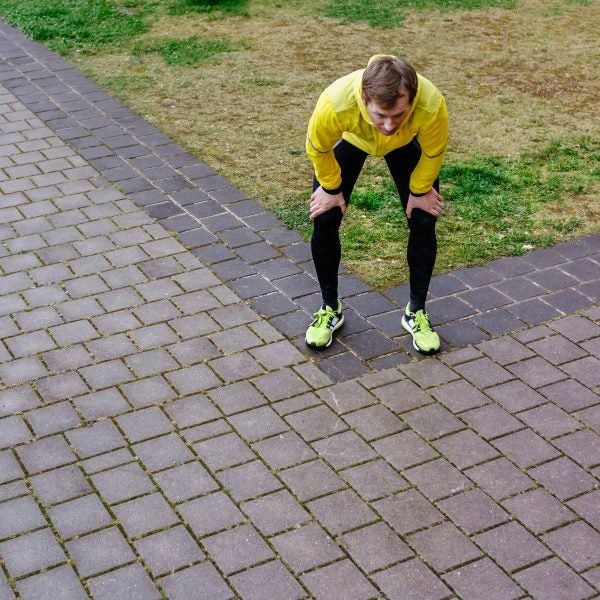Running News Daily
Running News Daily is edited by Bob Anderson. Send your news items to bob@mybestruns.com Advertising opportunities available. Train the Kenyan Way at KATA Kenya and Portugal owned and operated by Bob Anderson. Be sure to catch our movie A Long Run the movie KATA Running Camps and KATA Potato Farms - 31 now open in Kenya! https://kata.ke/
Index to Daily Posts · Sign Up For Updates · Run The World Feed
How To Avoid Stomach Cramps When Running
There is nothing worse than a rumbling stomach while you are out on a run. Whether you have a side stitch (side cramps) or feel the need to rush to the nearest porta-potty, stomach issues can really cramp your running style. Learn how to avoid stomach cramps when running with these tips.
Warm Up
A cramp in your side (side stitch) is—just like it sounds—a severe pain in your side body. It typically occurs right below the rib cage. It is not actually related to your stomach or digestive system. While the exact cause of side stitches is unknown, some theories suggest that it could be related to blood flow to the liver, spasms in the diaphragm, or stretching of the ligaments.

To prevent side stitches, warm up properly. This gives your body time to accommodate to faster breathing and adjust to stretching ligaments.
Hydrate

Do you skip drinking fluids during a run because you worry they will cause sloshing and cramping? It is time to adjust your strategy. This can lead to dehydration, which actually exacerbates stomach issues.
When you are exercising at an intense level, your body diverts blood away from the stomach in order to supply your muscles with much needed oxygenated blood. This means that digestion can be negatively affected.
Drink adequate fluids in the days leading up to your training session or race, and remember to drink throughout your run.
Practice Fueling
When you train for a long-distance race, you put in hours of running each week to gradually build your muscular and cardiorespiratory endurance. However, just like training your legs for those long runs, you also need to train your gut.
Often, newer athletes skip fueling during training but attempt to use a sports drink or gel during their first long race. The result? Stomach cramps, thanks to a belly that has never practiced processing fuel under such circumstances.
Luckily, the fix for this is easy. Simply practice your fueling strategy during training.
This will help teach your stomach how to process fuel under conditions of decreased digestive blood flow along with the jostling motion of running.
Do Not Over-Fuel
It can be tricky to nail down the correct amount of fuel to take in during a long run. But one thing is certain: trying to replace every calorie you burn is a recipe for disaster. Instead, aim to take in around 30 to 60 grams of carbohydrates (about 120 to 240 calories) per hour on runs lasting longer than one hour and 15 minutes.
If you are training for a long-course triathlon or ultra-marathon, you might bump that range up to 30 to 90 grams of carbohydrates per hour. As you start experimenting with fueling, start at the lower end of this range. If you feel like you need more energy, you can gradually work your way up to the higher end of the range on subsequent runs and see how your stomach tolerates this.
Minimize Fat
Fat is a satiating nutrient. It slows down digestion and helps us feel full longer. While this is great for everyday life, it is not ideal before a training session. You do not want to start running with a belly that is still feeling full and risk cramping. Low-fat, low-fiber breakfast ideas include:
Cereal with milk and a banana
Toaster waffle topped with peaches
Bagel with a small amount of cream cheese
Rice with a poached egg
Sandwich with a small amount of peanut butter, banana, and honey
The exception to this tip is if you are a fat-adapted athlete who is practicing the keto diet. In that case, you should follow your normal routine, as foods outside of that could cause stomach cramping. For most athletes, however, a standard moderate carbohydrate diet will lead to the best performance.
Know Your Lactose Tolerance
Lactose is sugar that is found in dairy products. Some people lack enough of the digestive enzyme known as lactase to properly break down this sugar. This is what is commonly known as lactose intolerance. If you have this condition, eating certain amounts of dairy can cause stomach cramping and diarrhea.
Interestingly, you can develop lactose intolerance later in life, even if you previously were able to tolerate dairy. Lactase production decreases over time for certain people based on genetic factors. For others, a gastrointestinal infection or inflammatory bowel disease may cause secondary lactose intolerance.
Digest Before Running
Most experts recommend eating a meal about one to four hours prior to running, though this is very individualized. Some runners have iron stomachs that allow them to eat a burger 30 minutes before a jog, while others might need two hours to process a small sandwich and some fruit.
If you often experience stomach cramps when running, try eating about three to four hours prior to your training session or event. Allowing more time between eating and running gives you more flexibility for the type and amount of food you can eat, as your body has ample time to digest.
Avoid NSAIDs
Ibuprofen and naproxen are NSAIDs (non-steroidal anti-inflammatory drugs). While some athletes might take these medications prior to or during a run to stave off any muscle soreness, this practice increases the risk of stomach upset and cramping.
In addition, overusing NSAIDs on long runs has been shown to increase the risk of hyponatremia (a dangerous diluting of blood sodium levels) and kidney damage, and could impair muscle recovery. It is wise to avoid these medications before or during a run unless a doctor has advised you to take them.
Rule Out Medical Conditions
In some cases, stomach cramps could indicate a food sensitivity or intolerance, irritable bowel syndrome, celiac disease, or another digestive complication. It is best to consult with a healthcare professional.
by VeryWell Fit
Login to leave a comment




